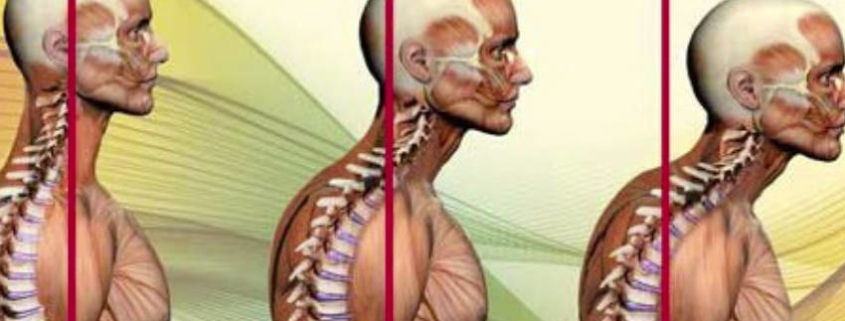Forward Head Posture
Posture affects and moderates every physiologic function from breathing to hormonal production. Spinal pain, headache, mood, blood pressure, pulse and lung capacity are among the functions most easily influenced by posture.”- American Journal of Pain Management 1994, 4:36-39.Forward Head Posture (FHP) can be recognised by the positioning of the ear being forward of the shoulder, rather than sitting directly over it. With today’s lifestyle, this condition occurs in between 66% and 90% of the population.
Forward Head Posture can be caused by performing activities that focus our attention directly in front of us with habitual poor posture. Adults and students sitting with shoulders rounded and back hunched whilst driving or working at their computers the whole day, looking into a microscope, texting on a cell phone, reading or sitting on the couch. Children develop forward head posture watching television, playing video games, and carrying heavy backpacks on their way to school. For every inch your head posture sits forward, the head gains 4.5kgs in weight. This forces the muscles in your upper back and neck to work much harder to keep the head (chin) from dropping forwards onto your chest, thus throwing the whole spine out of alignment .With your muscles in constant contraction to achieve this, pressure is added to the nerves at the base of the skull, which can cause headaches.
Forward head posture could result in as much as a 30% loss of lung capacity. Due to FHP the upper ribs are not be able to elevate properly during inhalation. Some studies show that FHP over time can contribute to disc degeneration, nerve impingement, bulging discs, or chronic back pain. In simple terms, the pressure of the spine radiating from the cervical spine (neck) will eventually put enough stress on other parts of the spine that they wear down. Abnormal neck posture has also been associated with abnormal functions of the eyes and the ears, and psychological and mental disorders. Other symptoms may include numbness in hands, Jaw pain, fibromyalgia and fatigue.Using skilled evaluation, diagnosis and a wide range of hands-on techniques, osteopaths can identify important types of dysfunction in your body. To treat Forward Head Posture Syndrome, an osteopath aims to relieve muscle and ligament tension by restoring the proper curves of the neck and spine and addressing muscular and fascial tensions throughout the body. Osteopathic treatment uses techniques such as stretching and massage for general treatment of the soft tissues (muscles, tendons and ligaments) along with mobilisation of specific joints and soft tissues. Prescription medications and anti-inflammatory injections may help relieve the symptoms of forward head posture but they do not address the root cause of the problem. True correction can only occur when both the structure (spine alignment) and function (muscular weakness and imbalances) have been restored.
Catch poor posture early to prevent it from causing life-long problems for you and your loved ones, get your family checked by an osteopath.
View a list of common complains that Osteopathy can assist with
Discovery the benefits of Osteopathy
- What is Osteopathy?
- Adult health issues
- Babies and Children
- During and after pregnancy
- Common Complaints
- Testimonials
- Sports Injuries
- Genral Osteopathy FAQs
- The Science & Reasearch



